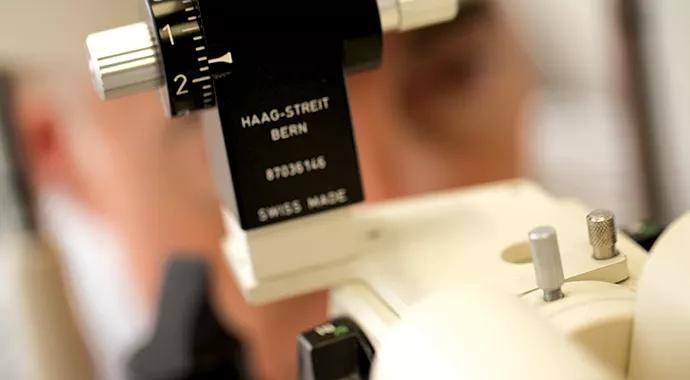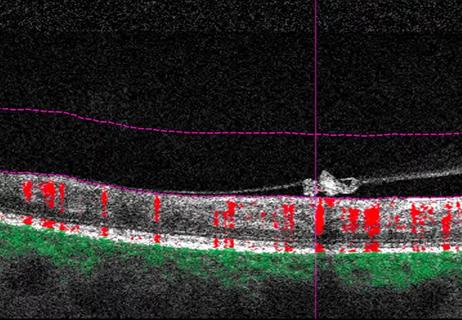Risks of dormant virus rule out procedures using lasers

A 40-year-old woman with a prior episode of herpes simplex keratitis in her right eye wanted surgical vision correction. The refractive error in her right eye was -7.00 + 1.25 X003 with keratometry of 47.25 @ 78/48.00 @ 168. Her cornea was substantially thinner than usual, with a central thickness of 490 microns.
Advertisement
Cleveland Clinic is a non-profit academic medical center. Advertising on our site helps support our mission. We do not endorse non-Cleveland Clinic products or services. Policy
Ophthalmologist Michael Gressel, MD, opted to perform surgery to implant the Visian ICL (implantable collamer lens), an intraocular lens with a concave optical center designed for the correction of myopia.
According to Dr. Gressel, the Visian ICL is made of a unique copolymer of collagen and poly-HEMA (poly-hydroxyethylmethacrylate) that is extremely biocompatible. “The material has physical characteristics that resist deposits of protein and cells on the lens surface,” he says.
The lens is not for eyes that are undergoing or have had cataract surgery. It has an extremely thin center of 50 microns to the optical portion. In the United States, the Visian ICL is indicated for the correction of myopia of 3.00 to 15.00 diopters in adults between the ages of 21 and 45 whose eyes have no more than 2.5 diopters of astigmatism.
The patient’s prior episode of herpes simplex keratitis made the Visian ICL the treatment of choice for Dr. Gressel. “Other surgical options that use ultraviolet-wavelength lasers, such as LASIK and PRK, involve a risk of reactivating the dormant herpes simplex virus that may be present in the patient’s cornea,” he says.
Dr. Gressel performed a laser iridotomy to prevent pupillary block. The procedure took place in an OR with the same type of modified conscious sedation used for cataract surgery. He made a beveled keratome incision in the temporal clear cornea and two auxiliary incisions for manipulating the lens and managing fluidics.
To insert the Visian ICL, he loaded it into the delivery cartridge and injected it into the anterior chamber of the eye under viscoelastic. The footplates, which rest in the ciliary sulcus, were tucked behind the iris, and the viscoelastic was irrigated out of the eye. No sutures were needed.
Advertisement
Among its benefits, the Visian ICL can be used when corneal conditions (e.g., prior corneal infections and scars, ectatic dystrophies, excessively thin or steep corneas) make laser vision correction with LASIK or PRK too risky. In addition, its effects can be reversed by removing the device, whereas laser vision correction is irreversible.
However, the Visian ICL is not without risks. These include the potential for cataract formation, endophthalmitis, glaucoma, corneal decompensation, and retinal detachment due to the introduction of a prosthetic device in the eye.
Five years after the implantation of the Visian ICL, the patient had uncorrected distance acuity of 20/25. Except for checking intraocular pressure within a few hours of the procedure, postoperative care was similar to that for cataract surgery. In the event of a future cataract, the ICL can be easily removed at the time of surgery.
Find more Cornea articles here!
Advertisement
Advertisement

Study highlights the value of quantitative ultra-widefield angiography

Switching medications may decrease treatment burden and macular fluid

Interventions abound for active and stable phases of TED

Corneal imaging and interpretation play a major role

Effect of low-dose atropine and dual-focus contact lenses is unknown in patients with comorbid eye conditions

How to screen for and manage treatment-triggered uveitis

Minimally invasive surgery is effective for uveitic and steroid-induced glaucoma too

Why retina specialists should get comfortable with this imaging tool